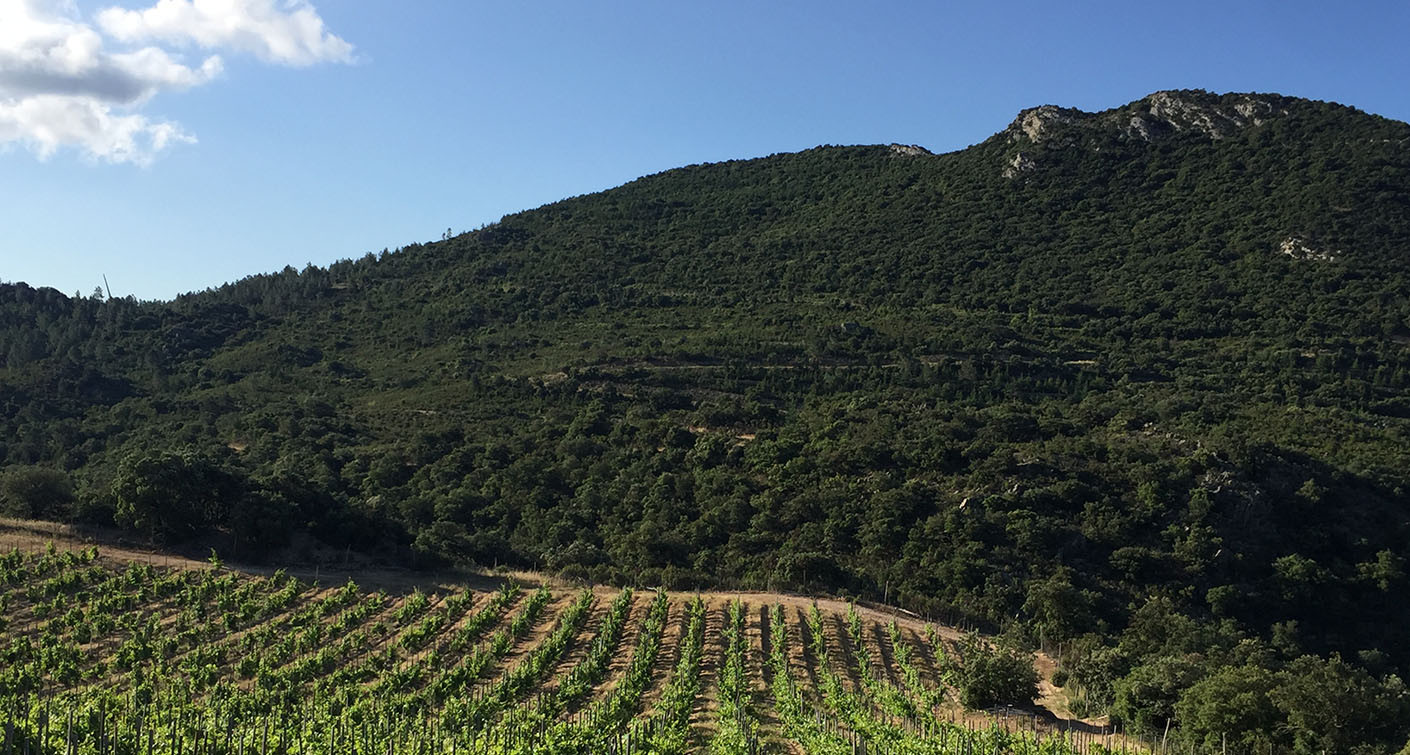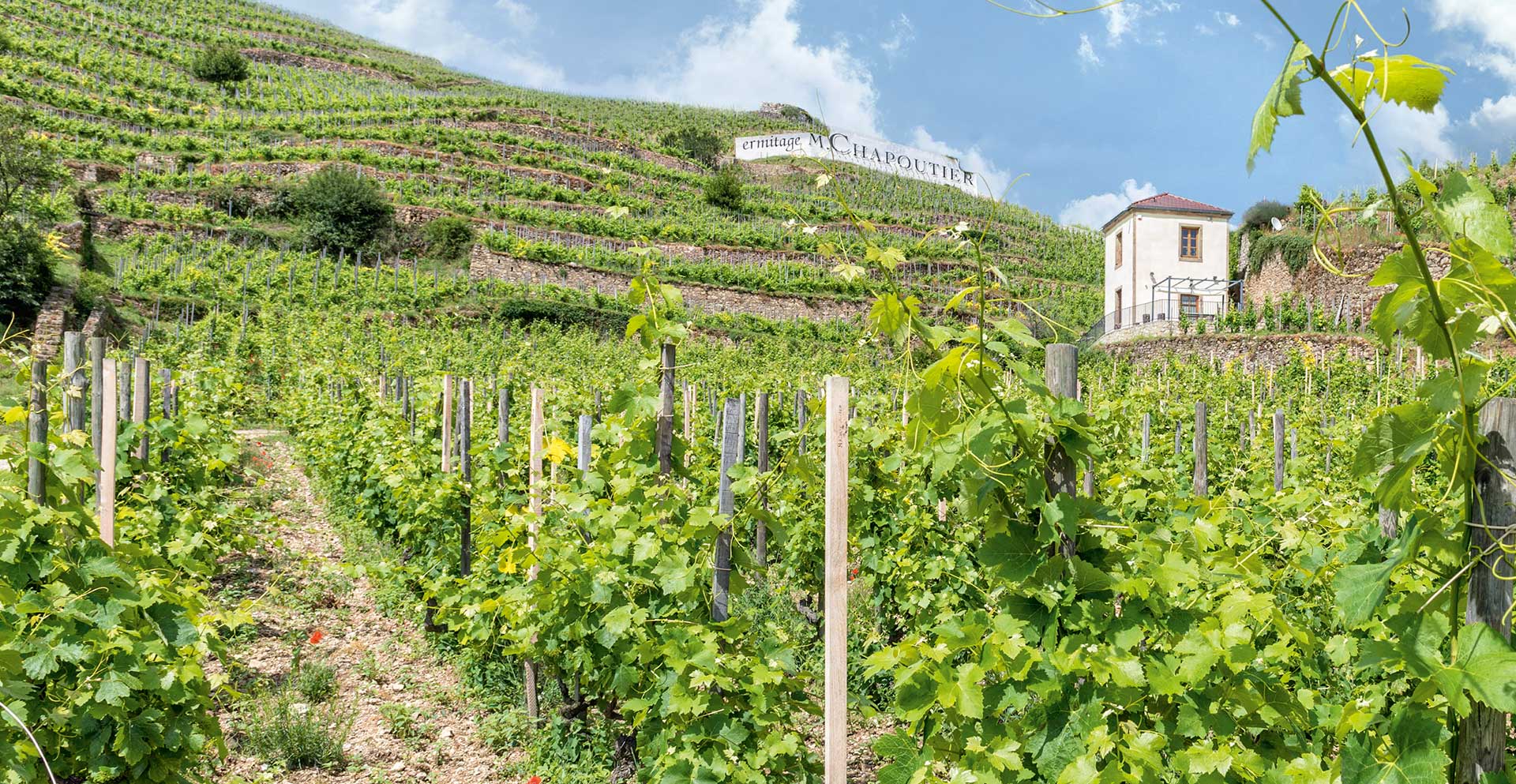Roussillon's wines : 2020, a winegrower’s vintage
In the vineyard
02 February 2021

A winegrower’s vintage
The very mild winter was accompanied by heavy rainfall (+300mm accumulated in January). Great water reserves built up in the soil, a welcome store in preparation for the region’s scorching summers. Then came a relatively cool start to spring, delaying budburst. About ten days later than a normal vintage.
Spring continued with a rainy period, the likes of which are rarely seen in Roussillon: 350mm accumulated on Latour de France between the end of April and the beginning of June, and 490mm on Lesquerde! (the equivalent of a whole year’s rainfall in a single month). These beneficial Roussillon rains came just when the vines were at their most sensitive, particularly to mildew.
Adaptation is so important to survival: tractors can no longer get into the vines, as the soil is waterlogged. It is therefore with quads and sometimes on foot, and no short measure of willpower, that the development of mildew was contained, but not without a notable loss of volume. But in the end, the rains made it possible to regulate the vines for the summer, avoiding hydric stress and producing a more bountiful vintage than in 2019.
The arrival of the summer was perfectly time for the continued development of the grape bunches and the beginning of ripening. Even though it was very hot and very dry, the accumulated water reserves brought the healthy harvest to optimum ripeness.
The 2020 harvest was much more condensed than other years: all picked in four weeks, erasing the maturity discrepancies between the whites of Collioure and Latour de France, among others. The Collioure vines took advantage of this sunny climate, without water stress, to produce pure, elegant wines. On Latour de France and Lesquerde, the water and summer heat contributed to very well-balanced, structured wines. The biodynamic wine-making process revealed silky tannins and a beautiful aromatic complexity.
v.i.t.:
The vintage reveals a perfect balance between Syrah and Grenache, lending the wine elegance and power. There are notes of sour cherries, scents of the garrigue, full and fatty on the palate with more freshness and spices (pepper, cinnamon). The tannic structure is a little tighter, but still generous.
r.i.:
The Terroir’s characteristics of granitic arenas are very present in this vintage, expressing extensive minerality. It has the fatty textures of the more southerly wine-growing regions making this wine readily accessible, and a very fresh, minty first nose. Beautiful notes of scrubland flowers. Straight and racy tannins promising great ageing. Chrysopée white:
Fresh, complex nose. Aromas of apricot, cider apple and white flowers. The rich palate with its apricot flavours is marked by the schist Terroir and the proximity of the sea, adding salinity. Slightly toasted note.
Chrysopée red:
A vintage of great finesse: lots of fruit (cherry, raspberry, wild strawberry, blackcurrant) silky on the palate where the tannins, although very present, gently caress the palate. In the mouth: cherry and sea-salt, very long on the palate, exceeding 10 caudalies (10 seconds’ persistence).
Occultum Lapidem white:
Complex nose of white flowers, apricot, finely toasted. Generous on the palate with an attack full of freshness, evolving towards warmer apricot notes. An already well-integrated woody note tops off its minerality.
Occultum Lapidem red:
A lot of complexity in this wine from four different soil types (limestone clays, schists, gneiss and quaternary alluvium). This vintage combines all the richness of Roussillon with more freshness and tension. Notes of cherry, garrigue, spices and graphite adorn this unctuous wine.
L’Esquerda:
Nose very marked by the high-altitude granite Terroir; at first very fresh, mentholated, then comes blackcurrant before the aromas develop towards thyme scents of the south, finishing with spicy notes. Minerality is the dominant feature on the palate of this wine that combines freshness, and tight but smooth tannins from the finesse of Grenache.


